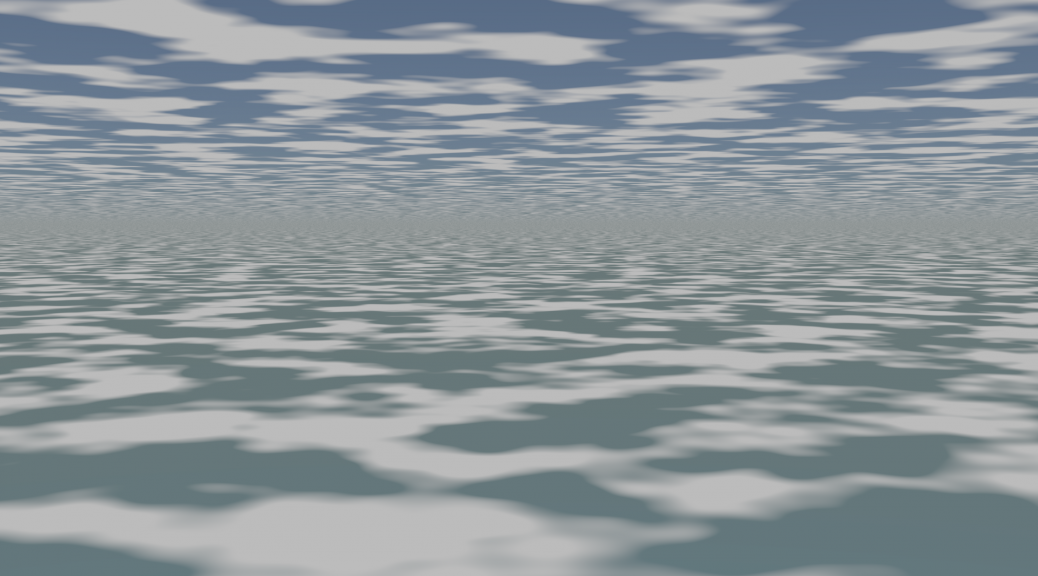The problem: how to texture a sky sphere with procedural clouds so that the clouds appear to recede into the distance at the horizon, rather than just being wrapped around the sphere. I searched around without luck for a way to do this, before realising that it’s so easy to do, however the maths isn’t going to be obvious to everyone so I thought I’d share this quick tip.
For those who just want the node setup, here it is.

However if you’re interested here’s a brief explanation. Im assuming you’re familiar with the standard trick of using a noise texture through a colour ramp as the factor to mix between a sky texture and a clouds texture (or in this case just a plain colour). I won’t bother to explain that bit. What we want is to be able to control the scale of that cloud texture so it gets smaller as the scale value increases towards the horizon. It turns out that the value we want is just the distance from our point of view to each point on an imaginary flat horizontal cloud layer somewhere above our heads. If we take the texture co-ordinate of any point on the sky sphere as a normalised vector, then the z component of that vector is the height above ground of the end of that unit length vector. All we need to work out then is how long we would have to make that vector to touch our imaginary cloud layer.
If we say the cloud layer is 1 unit above the ground, then when z is 1, the vector is pointing straight up and the required vector length is 1. If z is 1/2, then the vector would have to be length 2 to touch the clouds, if z is 1/3, then the required length is 3 and so on. So the length of that vector is just 1/z. Plug 1/z into the scale of our noise texture and bingo, perspective clouds.
